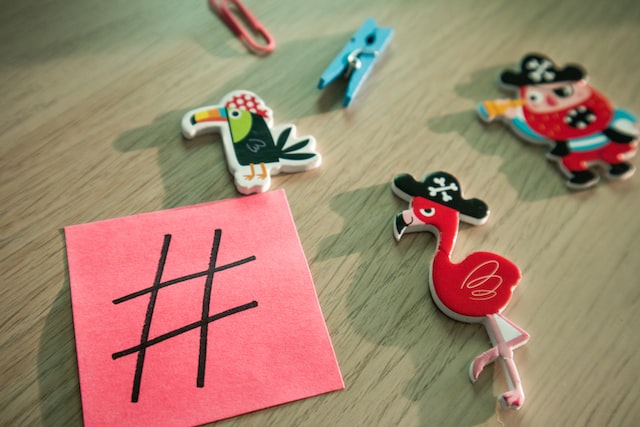Custom pins are an excellent way to promote your business or brand, support important causes and fundraisers, commemorate anniversaries and achievements, and more. Before you get started though, it’s essential that you decide what type of custom pin you would like to create.
Custom pins come in many varieties, such as cloisonne, soft enamel, hard enamel, die struck, 3D mold and acrylic pins. Each has its advantages and drawbacks.
Cloisonne
Cloisonne is an ancient technique that utilizes vibrant glass enamels with metal wires to craft stunning pieces of art, from jewelry to decorations.
Custom pins with a cloisonne finish are the ideal way to stand out at corporate events, fundraising initiatives and special celebrations. They come in an array of colors so your logo or design has a stunning high gloss sheen that is sure to catch people’s attention.
Crafting a custom pin with cloisonne requires meticulous precision and patience. After you approve your design, an exclusive mold is created that captures all of the design details while leaving raised metal outlines. This mold allows for deep impressions to be made of each detail while leaving behind subtle raised metal lines.
After the mold has been created, we fill each recessed area of your design with a glass-like powdered mixture. These areas are then fired at high temperature to lock in the colors and prevent bleeding. This step is essential for maintaining vibrant hues that won’t fade over time.
Once the color has been fired, cloisonne lapel pins are polished to a jewelry-like shine. This process ensures that all colors are flush with any metal dividing lines in your design.
Cloisonne pins are the most sought-after type of custom pin available at Pin Depot due to their smooth, glossy finish and lustrous appearance. Furthermore, this finish is highly durable – an important consideration when creating custom lapel pins.
Cloisonne is a timeless finish that has been sought-after by collectors and organizations for centuries. You can find this exquisite finish on many types of custom pins, such as lapel pins and medallions.
Soft Enamel
Custom pins come in many varieties, allowing you to pick which best suits your design. Soft enamel is one popular option and can be dyed a variety of colors.
These pins are created using a special die that presses metal into an intricate design, creating raised and recessed areas. Once filled with colored enamel paint, the entire pin takes on a textured and dimensional appearance.
Though not as durable as cloisonne, this method of manufacturing has gained popularity due to its cost-efficiency and straightforward production process. You can use this process to turn your designs into physical products for a variety of applications such as charities, sports teams, and marketing campaigns.
You could also start a business selling custom pins, which could be another viable option for those seeking to monetize. This could be an excellent income stream if you’re an artist with a niche market.
If you’re interested in developing a custom pin business, we suggest researching what people like in your niche and then creating products that reflect their values. Doing this will help you stand out from competitors and boost sales.
Are you curious to learn more about how to start creating custom pins? Look no further! Our eBook offers insider tips for designing and producing your pins as well as advice on building a successful business. It’s the ideal resource for anyone aspiring to run their own venture!
Hard Enamel
When selecting custom pins, there are numerous designs to choose from. Be sure to pick the design that best meets your individual requirements.
Hard enamel pins, also referred to as cloisonne pins, are the highest quality option available. 20% thicker than soft enamel pins and featuring a smooth glassy finish, these pins boast jewelry-quality aesthetics and often become collectibles.

Pins like this one are made by die striking metals such as iron or gold against a steel mold to form the design. Some manufacturers will even sandblast the recessed areas for an antique-looking two-tone metal effect.
Once a metal stamp is struck and deburred, it’s ready for colorfilling – where colored enamel is added to the metal and allowed to dry. Finally, an overfill of enamel paint creates the raised metal edges seen on most stamps.
After polishing, a strong polish is done to remove excess enamel and create a polished, even finish. This ensures that the enamel is level with the metal back so it won’t rub off onto other pins.
The final step in electroplating is adding a thin veneer of metal – brass, copper, gold or silver – over the edges. This creates an even texture across the top of the pin while still allowing for clear epoxy protection against color fading or cracking.
We don’t charge for this option, and it can be an ideal alternative if you can’t get a certain metal or just want to give your pin a different look. The glassy effect is similar to faux hard enamel and looks really cool!
Die Struck
Die Struck is a method used to craft jewelry out of metal. In this process, gold, silver or platinum is squeezed between two dies with incredible pressure to compress its molecules, making it stronger and more resistant to abrasion or wear than other types of jewelry.
The striking process is a much faster and more practical alternative than the traditional hand finishing required for filigree work in jewelry. With this technique, even intricate designs can be created from metal in just hours!
Another advantage of this method is its high level of detail. It makes for ideal jewelry pieces requiring exactitude, such as engraved rings and pendants.
Furthermore, the striking process is more cost-effective than other methods such as hand piercing or engraving.
Die struck custom pins are one of the most sought-after types. Not only are these pins versatile and suitable for many occasions, but they’re also remarkably durable – capable of withstanding years of daily abuse.
Pins can be plated in a range of metal finishes to further accentuate their aesthetic appeal. You may choose to have the pin sandblasted and enamel color fills applied for added visual impact.
These lapel pins are an ideal choice for those seeking a classic and sophisticated style. They can be plated in various metals with an antique finish to match any business attire perfectly.
Acrylic Pins
If you’re a creative person with an eye for design, acrylic pins could be the perfect business for you. They’re a fun and lucrative way to transform your designs into physical products, and they’re also easy to produce.
There are a few things you should know before getting started with acrylic pins. First, make sure you have a strong design that will stand out from the competition and won’t get lost in production.

Use bold lines to convey your design and avoid using muted colors or small text. This will help ensure that your design is clean and clear and makes it easier for the manufacturer to reproduce it on a physical product.
Be sure to add a bleed area around your design so the manufacturer can see where the colors will end up on the finished product. This will save you time in the long run and keep your design looking great.
The next step in the manufacturing process is to find a manufacturer who can turn your ideas into acrylic pins. This can be a bit intimidating, but if you take the time to do your research and choose a reputable manufacturer, it’s worth the effort.
Before you sign any contracts, ask your potential manufacturers for a free sample pin or acrylic stand so that you can see if their process and quality live up to your expectations. This will give you a chance to verify that the manufacturer has created your vision accurately, and can deliver high-quality pins at a reasonable price.
3D Mold
Custom pins can be created using a variety of techniques, but one of the most popular is 3D mold. This method enables designers to craft intricate designs without sacrificing quality.
This type of design is especially advantageous when the parts are small and require fine lines and details. Furthermore, it enables unique shapes that may not be possible through traditional stamping processes.
Casting offers a high level of detail as well as being lightweight and user friendly – making it an ideal solution for those searching for an economical way to produce custom pins.
When designing a custom pin mold, the first step is to determine the size of the blocks used. This decision is essential since the block must accommodate the part geometry and provide reliable ejection. Furthermore, ensure there is enough space between the part and outer walls of the block for airtight seals.
Next, the runner system and gate should be determined. This is an essential aspect of mold design that can have a major effect on results. Misaligning the runner between the frame and printed mold block can seriously compromise production quality parts; to avoid this issue, include its location within your master model.
Depending on the desired mold configuration, an aluminum frame may be inserted into or manufactured as a stand-alone unit. Either way, this provides support against pressure and heat generated by an injection mold nozzle; helping prevent warping after repeated usage and allowing intricate cooling channels to be integrated into the design.

